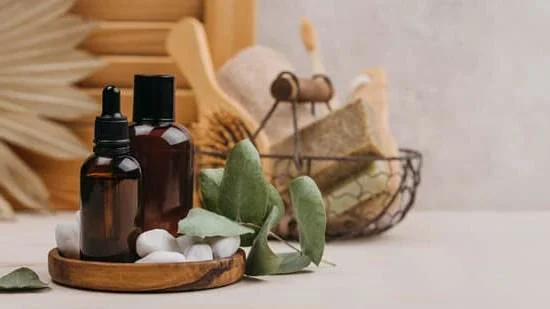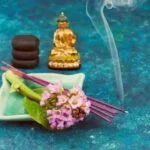Aromatherapy has gained popularity in recent years as a natural and holistic approach to enhancing overall well-being. One of the key aspects of aromatherapy is the use of essential oils, also known as aromatherapy oils, which are derived from various plants, flowers, and herbs. These oils have been used for centuries for their therapeutic properties and their ability to promote relaxation, alleviate stress, and improve mood.
In this article, we will explore how to use aromatherapy oils effectively to harness their benefits. Whether you are a beginner or have some experience with aromatherapy, it is important to understand the different types of oils available and their individual properties. By understanding the basics of aromatherapy and its potential benefits, you can make informed choices when it comes to selecting the right oil for your needs.
Additionally, we will delve into safety precautions and guidelines for using aromatherapy oils. While these oils offer numerous health benefits, it is crucial to use them responsibly and carefully. We will highlight important safety considerations to ensure that you can enjoy the advantages of aromatherapy without any adverse effects.
By incorporating aromatherapy oils into your daily routine, you can create an immersive sensory experience that promotes relaxation and boosts overall well-being. Whether through inhalation or topical application, there are various popular methods that allow you to enjoy the aromatic benefits of these oils. We will discuss these methods in detail and provide guidance on how to use them effectively for maximum therapeutic effect.
As you embark on your journey with aromatherapy oils, we will also explore DIY blends and recipes that cater to specific purposes such as stress relief or better sleep quality. Additionally, we will take a closer look at the science behind aromatherapy oil’s effectiveness in promoting physical and emotional well-being.
Enhancing your well-being through aroma therapy oil can be an enjoyable and beneficial practice when done correctly. Let’s dive in further into understanding what exactly are these aromatherapy oils and how they can make a positive impact on your life.
Understanding the Different Types of Aromatherapy Oils
Aromatherapy oils come in a wide variety of types, each with its own unique benefits and uses. Understanding the different types of aromatherapy oils is essential for effectively incorporating them into your wellness routine. Here are some of the most popular types of aromatherapy oils and their specific properties:
- Lavender oil: Known for its calming and relaxing properties, lavender oil is one of the most versatile essential oils. It can be used to alleviate stress and anxiety, promote better sleep, and even soothe minor skin irritations.
- Peppermint oil: With its refreshing and invigorating scent, peppermint oil is commonly used to boost energy and improve focus. It is also known to help relieve headaches, clear congestion, and aid digestion.
- Tea tree oil: This powerful antiseptic oil is often used for its antibacterial and antifungal properties. Tea tree oil can be applied topically to treat skin conditions such as acne or athlete’s foot.
- Eucalyptus oil: Known for its cooling sensation, eucalyptus oil is commonly used to relieve respiratory issues like congestion or sinusitis. It can also be added to massage oils or bathwater for a soothing effect on sore muscles.
- Lemon oil: With its bright and citrusy scent, lemon oil is often used for its uplifting and energizing properties. It can also be mixed with other cleaning agents to create a natural household cleaner.
When choosing aromatherapy oils, it’s important to consider their individual properties as well as your specific needs or desired outcomes. While these are just a few examples of popular aromatherapy oils, there are many others available on the market with their own unique benefits.
Safety Precautions
While aromatherapy oils are generally safe when used correctly, it’s important to take certain precautions:
- Dilute properly: Aromatherapy oils are highly concentrated and should always be diluted before use. Follow the recommended dilution ratios and guidelines for safe use.
- Conduct a patch test: Before using an aromatherapy oil topically, perform a patch test on a small area of skin to check for any adverse reactions or sensitivities.
- Keep away from children and pets: Aromatherapy oils should be stored in a safe place, out of reach of children and pets, as they can be toxic if ingested.
- Avoid contact with eyes and mucous membranes: It is essential to avoid direct contact with the eyes, ears, nose, or any sensitive areas of the body when using aromatherapy oils.
- Consult with a healthcare professional: If you are pregnant, nursing, have any medical conditions, or are taking medications, it is advisable to consult with a healthcare professional before using aromatherapy oils.
By following these safety precautions and understanding the different types of aromatherapy oils available, you can enjoy the many benefits that these natural remedies have to offer while keeping yourself safe.
Safety Precautions and Guidelines for Using Aromatherapy Oils
Aromatherapy can be a wonderful and effective way to enhance your well-being, but it’s important to use essential oils safely. Here are some safety precautions and guidelines to keep in mind when using aromatherapy oils:
- Dilute properly: Essential oils are highly concentrated and should never be used directly on the skin without dilution. It’s recommended to dilute essential oils with a carrier oil, such as jojoba, almond, or coconut oil. The standard dilution ratio is 2-3 drops of essential oil per teaspoon (5 mL) of carrier oil for adults.
- Patch test: Before applying an essential oil topically, it’s crucial to perform a patch test to check for any potential allergic reactions or sensitivities. Apply a small amount of the diluted essential oil to a small area of skin (such as the inner wrist or forearm), and wait 24 hours to see if any adverse reactions occur.
- Keep away from eyes and mucous membranes: Essential oils should never come into direct contact with your eyes or mucous membranes, such as inside your nose or mouth. If accidental contact occurs, immediately rinse the area with plenty of cold water.
- Use caution during pregnancy and with children: Some essential oils are not safe for use during pregnancy or on infants and young children. It’s important to consult with a healthcare professional or certified aromatherapist before using any essential oils in these situations.
- Store properly: Essential oils should be stored in dark glass bottles in a cool, dry place away from direct sunlight and heat sources. This helps preserve their potency and extends their shelf life.
- Educate yourself: It’s important to do thorough research about each essential oil you plan to use before incorporating it into your routine. Different essential oils have different properties and safety guidelines, so make sure you’re aware of potential risks and contraindications associated with each one.
By following these safety precautions and guidelines, you can safely enjoy the many benefits of aromatherapy oils. Remember, it’s always better to err on the side of caution when using essential oils, especially if you’re new to aromatherapy.
Choosing the Right Aromatherapy Oil for Your Needs
When it comes to aromatherapy, choosing the right essential oil is essential to achieve the desired benefits. With so many options available, it can be overwhelming to determine which oil is best suited for your needs. Here are some tips to help you choose the right aromatherapy oil:
- Identify your purpose: Before selecting an essential oil, think about what you hope to achieve through aromatherapy. Different oils have different properties and effects on the body and mind. For example, lavender oil is known for its calming and soothing properties, while peppermint oil is invigorating and energizing.
- Research the properties of each oil: It’s important to educate yourself about the different properties of each essential oil before making a decision. Look into their benefits, uses, and any potential contraindications or side effects. This will help you make an informed choice that aligns with your goals and ensures safety.
- Consider personal preferences: Aromatherapy is a highly individualized practice, and personal preferences play a significant role in selecting an essential oil. Take into account scents that you enjoy or find appealing as this can enhance your overall experience with aromatherapy.
Once you have identified your purpose and familiarized yourself with the properties of various essential oils, you can start experimenting with different blends to find what works best for you. Using a diffuser or creating personalized blends by combining multiple oils can provide customized aromatherapy experiences tailored to your specific needs.
| Oil | Properties |
|---|---|
| Lavender | Calming, soothing, promotes relaxation |
| Peppermint | Energizing, invigorating, aids digestion |
| Lemon | Uplifting, improves focus and concentration |
| Eucalyptus | Clears sinuses, promotes respiratory health |
Remember, when using aromatherapy oils, it is crucial to follow safety guidelines and procedures. Essential oils are highly concentrated substances that should be diluted before use and should never be applied directly to the skin in their undiluted form. It is recommended to consult with a qualified aromatherapist or healthcare professional for personalized guidance when incorporating aromatherapy oils into your routine.
Popular Methods of Using Aromatherapy Oils
One of the most popular methods of using aromatherapy oils is through inhalation. This method allows the essential oils to be quickly absorbed into the bloodstream through the respiratory system, providing almost immediate benefits. There are several ways to enjoy the therapeutic effects of aromatherapy oils through inhalation.
Direct Inhalation
Direct inhalation involves inhaling the aroma of the essential oil directly from the bottle or a few drops on a tissue or cotton ball. Simply hold the bottle up to your nose and take a deep breath, or place a few drops onto a tissue or cotton ball and hold it near your nose. This method is quick and convenient, making it ideal for immediate relief.
Steam Inhalation
Steam inhalation is another effective way to use aromatherapy oils. Boil water in a bowl or pot, then remove from heat and add a few drops of your chosen essential oil(s). Create a tent with a towel over your head and lean over the bowl, ensuring you are at a safe distance to avoid burns.
Inhale deeply through your nose for 5-10 minutes while breathing in the steam and aroma. This method can help relieve respiratory congestion, cold symptoms, and promote relaxation.
Diffusers
Diffusers are devices that disperse essential oils into the air, filling your space with fragrance and therapeutic benefits. There are different types of diffusers available, such as ultrasonic diffusers that use water to disperse the oils into fine mist particles, nebulizing diffusers that release undiluted essential oil directly into the air, and heat-based diffusers that utilize indirect heat to evaporate the oil. Diffusing essential oils is an excellent way to create an inviting atmosphere while reaping their health benefits.
Incorporating these inhalation methods into your daily routine can enhance your well-being by promoting relaxation, reducing stress, improving sleep quality, boosting mood, and providing relief from respiratory issues. Experiment with different essential oils and inhalation methods to find what works best for you. Remember to always follow the safety guidelines and choose high-quality aromatherapy oils for optimal results.
Popular Methods of Using Aromatherapy Oils
Massage Therapy with Aromatherapy Oils
One of the most popular methods of using aromatherapy oils is through topical application, particularly in massage therapy. Massage therapists often incorporate essential oils into their practice to enhance the therapeutic benefits of the massage. When applying aromatherapy oils topically, it is important to dilute the oils with a carrier oil to prevent skin irritation or sensitivity.
To use aromatherapy oils for massage, start by choosing a carrier oil that suits your skin type and desired outcomes. Common carrier oils include almond oil, jojoba oil, and coconut oil. Once you have selected your carrier oil, mix it with a few drops of the desired essential oil(s). The general rule of thumb for dilution is 2-5% essential oil for adults and 0.5-2% for children or individuals with sensitive skin.
When applying the aromatherapy blend during a massage, make sure to warm it between your palms before applying it to the client’s body. Use gentle and fluid motions, adjusting pressure and technique based on their preferences and needs. Different types of essential oils offer various benefits during massage therapy. For example, lavender oil promotes relaxation and stress relief, while peppermint oil can be invigorating and help alleviate muscle tension.
Using Aromatherapy Oils in Skincare
Another popular way to utilize aromatherapy oils topically is through skincare routines. Essential oils can be added to lotions, creams, serums, or even homemade face masks to address specific skin concerns or enhance overall complexion.
When adding essential oils to skincare products or creating homemade blends, it is crucial to research each individual oil’s properties and potential side effects. Some essential oils may increase photosensitivity or cause skin irritation when used without proper dilution.
To use aromatherapy oils in skincare products, add a few drops of the chosen essential oil to your preferred base product and mix well. A good starting point is 1-2 drops of essential oil per ounce of product, but adjust according to personal preferences and desired results.
Direct Application and Spot Treatments
In addition to massage therapy and skincare, aromatherapy oils can be directly applied to specific areas of the body for targeted benefits. For example, tea tree oil is commonly used as a spot treatment for blemishes or insect bites due to its antiseptic properties.
Before applying an undiluted essential oil directly onto the skin, it is essential to conduct a patch test on a small area first to ensure there is no adverse reaction. If no irritation occurs, use a cotton swab or your fingertips to apply a small amount of oil to the desired area.
It’s important to note that direct application is not suitable for all essential oils, as some may cause skin sensitization or irritation. Always do thorough research and consult with a qualified aromatherapist before using any aromatherapy oil in this manner.
By incorporating these various methods of topical application into your daily routine, you can experience the therapeutic benefits of aromatherapy oils firsthand. Whether it’s through massage therapy, skincare routines, or spot treatments, finding what works best for you will enhance your overall well-being and promote relaxation and self-care.
Incorporating Aromatherapy Oils into Your Daily Routine
In today’s fast-paced world, finding moments of relaxation and self-care is essential for maintaining a healthy lifestyle. One way to achieve this is by incorporating aromatherapy oils into your daily routine. Aromatherapy oils can be used in various ways to promote physical and emotional well-being, making it easier to manage stress and support overall health.
One popular method of incorporating aromatherapy oils into your daily routine is through the use of diffusers. Diffusers disperse the scent of the oils into the air, allowing you to enjoy their therapeutic benefits throughout the day. Whether you place a diffuser in your office or living room, the gentle aroma can create a calming environment and help alleviate stress.
Another way to incorporate aromatherapy oils into your daily routine is by adding them to your bath or shower. Simply add a few drops of your chosen oil to warm running water or mix it with a carrier oil and apply it directly on your skin before stepping into the shower. The steam of the shower will help release the scent, creating a spa-like experience in the comfort of your own home.
You can also bring aromatherapy oils with you wherever you go by using personal inhalers or roll-on bottles. These portable options allow you to have quick access to your favorite scents whenever you need them. Inhaling the aroma directly from a personal inhaler or applying a roll-on oil blend onto pulse points can provide immediate relief from stress during busy days or when you’re on-the-go.
Incorporating aromatherapy oils into your daily routine doesn’t have to be complicated or time-consuming. By making small adjustments, such as using diffusers, adding them to your bath or shower, or carrying them with you in portable containers, you can reap their benefits throughout the day and enhance your overall well-being.
| BENEFITS | EXAMPLE OILS FOR DAILY ROUTINE |
|---|---|
| Promotes relaxation and stress relief | Lavender, Chamomile, Ylang Ylang |
| Boosts mood and energy levels | Lemon, Peppermint, Orange |
| Improves focus and concentration | Rosemary, Eucalyptus, Basil |
| Enhances sleep quality | Frankincense, Bergamot, Sandalwood |
| Soothes headaches and migraines | Peppermint, Lavender, Rosemary |
DIY Aromatherapy Blends and Recipes for Different Purposes
Creating your own aromatherapy blends at home can be an enjoyable and fulfilling experience. It allows you to customize the scents and benefits of the oils to suit your specific needs. Whether you are looking for a blend to help promote relaxation, relieve stress, or boost energy, there is a wide range of essential oils and recipes available for you to explore.
To start creating your own aromatherapy blends, it is important to understand the concept of “notes” in aromatherapy. Essential oils are classified into different notes based on their evaporation rate. The three main categories are top notes, middle notes, and base notes. Top notes evaporate quickly and give a fresh and uplifting scent, middle notes have a balancing effect, while base notes evaporate slowly and provide a rich and grounding aroma.
For relaxation purposes, consider blending lavender (a top note), chamomile (a middle note), and sandalwood (a base note). This blend has a calming effect on the mind and body. If you are looking for an energizing blend to boost your mood, try combining citrus oils like lemon or orange (top notes) with peppermint (a middle note) or rosemary (another top note). These citrusy blends create an invigorating aroma that can help increase focus and productivity.
When creating your DIY aromatherapy blends, it is important to dilute the essential oils properly before use. Essential oils are highly concentrated substances and can cause skin irritation if applied directly to the skin. To dilute them for topical application, use carrier oils such as coconut oil or sweet almond oil. A general rule of thumb is to use around 1-2 drops of essential oil per teaspoon of carrier oil.
Remember that everyone’s preferences may vary when it comes to scents, so feel free to experiment with different combinations until you find what works best for you. Additionally, keep in mind any potential contraindications or allergies you may have when selecting oils for your blends.
By exploring different aromatherapy recipes and blends, you can discover the power of scent in enhancing your well-being. Creating your own blends allows you to personalize your aromatherapy experience and tailor it to your unique needs and preferences. So, grab some essential oils, get creative, and start enjoying the benefits of aromatherapy in your daily life.
Exploring the Science Behind Aromatherapy and Its Effectiveness
Aromatherapy has been used for centuries as a natural method to enhance well-being and promote relaxation. While many people enjoy the soothing scents of essential oils, there is also scientific evidence that supports the effectiveness of aromatherapy in improving various health conditions. In this section, we will explore the science behind aromatherapy and its effectiveness in promoting physical and mental wellness.
Numerous studies have shown that certain essential oils can have a positive impact on physical health. For example, lavender oil has been found to reduce anxiety and improve sleep quality. This is due to its ability to activate the brain’s relaxation response, which helps to calm the nervous system and induce feelings of relaxation.
Peppermint oil, on the other hand, has been shown to relieve headaches and migraines when applied topically or inhaled. Its cooling properties help soothe tension and alleviate pain.
In addition to its effects on physical health, aromatherapy can also support mental wellness. Research suggests that certain essential oils can help reduce stress levels and improve mood. One study found that inhaling bergamot essential oil reduced participants’ cortisol levels (the stress hormone) and induced feelings of relaxation. Another study showed that lemon oil inhalation improved mood and increased feelings of contentment.
These scientific findings highlight the effectiveness of aromatherapy in enhancing overall well-being. However, it is important to note that while aromatherapy can be a beneficial complement to traditional medical treatments, it should not be viewed as a replacement for professional medical advice or treatment. It is always recommended to consult with a healthcare provider before using aromatherapy oils, especially if you have any underlying health conditions or are taking medications.
By understanding the science behind aromatherapy and its effectiveness, you can feel confident in incorporating it into your daily routine as a natural way to promote wellness and relaxation. Whether through inhalation or topical application, the therapeutic benefits of essential oils can provide a holistic approach to self-care.
Conclusion
In conclusion, incorporating aromatherapy oils into your daily routine can be a powerful tool for enhancing your overall well-being. By understanding the different types of oils and their specific benefits, you can choose the right oil for your needs. It is important to follow safety precautions and guidelines when using these oils to ensure a positive experience.
One popular method of using aromatherapy oils is through inhalation. Whether it’s through diffusers, steam inhalation, or simply taking a whiff from a bottle, inhaling the aromatic molecules can have a direct impact on your mood, stress levels, and even your immune system. This method is especially effective for respiratory conditions such as congestion or allergies.
Another widely used technique is topical application. When diluted with a carrier oil such as coconut or almond oil, essential oils can be safely applied to the skin for various purposes. From soothing muscle pains to improving skin conditions, topical use allows the therapeutic properties of the oils to directly benefit the body.
To further personalize your aromatherapy experience, you can experiment with DIY blends and recipes. Whether you want to create a relaxing blend for bedtime or an energizing blend for focus and productivity, there are countless recipes available online that cater to different needs and preferences.
While aromatherapy has been practiced for centuries, modern scientific research continues to explore its effectiveness and mechanisms of action. Although some critics question its scientific validity, there is evidence suggesting that certain essential oils have antimicrobial properties and can positively affect emotional states.
Frequently Asked Questions
How do you use essential oils for beginners?
Using essential oils for beginners can be quite simple. The first step is to choose the oil or oils you want to use. It’s important to research each oil’s properties, benefits, and any potential risks or allergies before using them. Once you have your desired essential oil, you can then decide how to apply it.
Common methods include inhalation, topical application, or ingestion (although ingestion should only be done under expert guidance). To inhale the oil, you can either use a diffuser or simply inhale the aroma directly from the bottle. For topical application, you’ll need a carrier oil such as coconut or jojoba oil to dilute the essential oil before applying a small amount to your skin. It’s crucial to perform a patch test on a small area of skin before using an essential oil topically to check for any adverse reactions.
What are the 3 ways essential oils can be used?
There are three primary ways in which essential oils can be used: aromatically, topically, and internally (although ingestion should always be approached with caution and advice from professionals). Aromatic use involves inhalation of the scent of essential oils through methods like diffusers or by placing a few drops on a tissue or cloth and inhaling directly. This is often considered the easiest and safest way to enjoy the benefits of essential oils because it allows for easy diffusion into the air.
Topical use involves applying diluted essential oils onto your skin. Diluted oils can be used for massages, added to skincare products like lotions or creams, or even combined with carrier oils for direct application. Lastly, internal use refers to ingesting essential oils orally through capsules or by adding them sparingly to food and drinks.
Where do you put aromatherapy oils?
When using aromatherapy oils, they should generally be placed in specific locations that allow their scents to disperse effectively throughout the space. One common approach is using an aroma diffuser where you add water along with a few drops of your desired essential oil. The diffuser then disperses the oil into the air, filling the room with its aroma. Alternatively, you can create a personal inhalation blend by adding a few drops of essential oil onto a tissue or cloth and holding it near your nose, allowing the scent to be inhaled directly.
Another method is using spray bottles filled with water mixed with essential oils to mist rooms or linens. Additionally, you can add a few drops of essential oils to warm bathwater for a soothing experience, or mix them into carrier oils or lotions for massage purposes. Ultimately, where you put aromatherapy oils depends on how you want to experience their effects – whether that’s in the air through diffusion or directly on your skin.

Are you looking for a natural way to improve your health and wellbeing?
If so, aromatherapy may be the answer for you.






